Huaco
Well-Known Member
I had an "Ah-Ha" moment when doing some pressure testing on kegs one day... after draining a bottle of CO2 pressurizing about 20 kegs to check for leaks, I built this little contraption. It allows you to perform pressure checks and push Liquid Line Cleaner through a draft system using compressed air instead of valuable CO2. The inline regulator allows you to regulate the supply air down to whatever pressure you need. Just heed the pressure rating for your keg... AND NEVER EXCEED ANY RATED PRESSURE. Use some brains people. lol
NOTE: The regulator I listed is not the one I used in my build. I was given a low pressure regulator with more adjustment in the low end below 40 psi. Search around, you may find one. Also, I snagged the photo of the entire setup assembled together from JCav here who asked me about how to build one...
Anyway, here's what I do.
-Mix a 5 gallon batch of LLC in a keg.
-Attach the regulator adapter to any standard compressed air hose
-Adjust pressure down to about 5 psi
-Hook up liquid line of serving line to keg of LLC
-Connect regulated compressed air line to keg of LLC
-Open tap and allow LLC to flow for about 5 minutes. This is the recommended flow time for the brand of LLC I use.
-Repeat for each line or get yourself some Ball Lock Jumpers from BobbyM jumping each serving line together and clean all lines in a single pass.
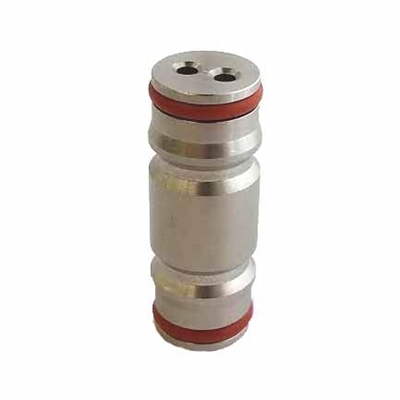
-Rinse and fill keg with fresh tap water. Repeat all these steps to rinse all lines of any LLC. (Follow instructions for your LLC)
-Allow all rinse water to be pushed out of keg as well as lines to leave lines empty. Or, shut it down just before the keg is empty of rinse water to leave the lines full of water... your choice.
---Regulated compressed air Keg adapter---

Quick Connect
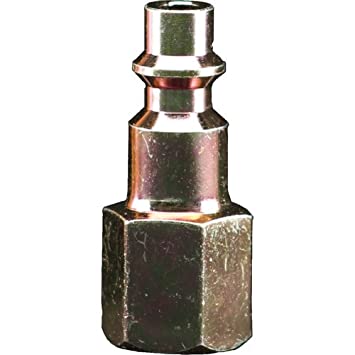
Barbed adapter
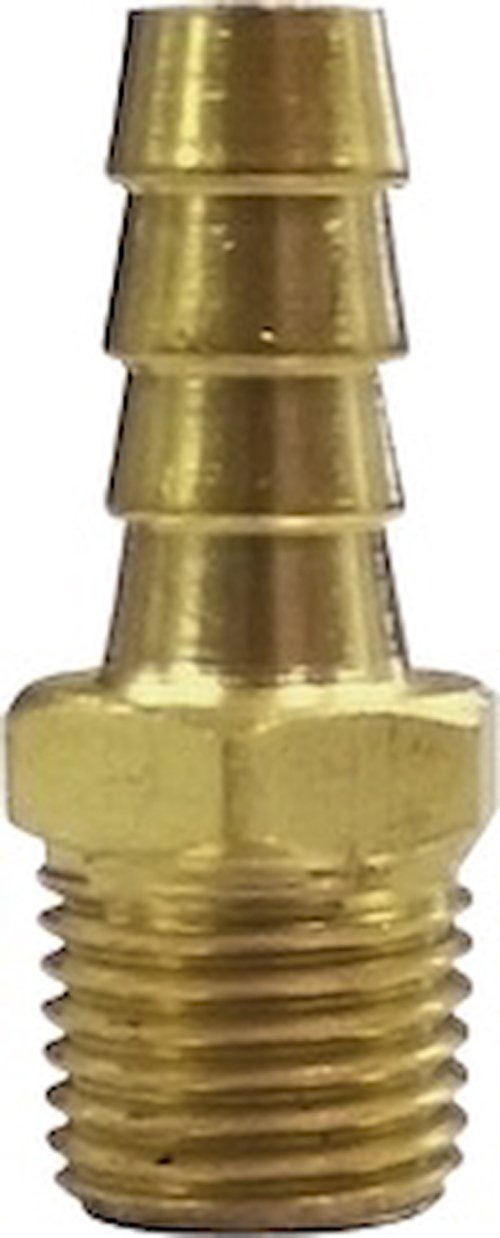
red beverage gas hose assembly
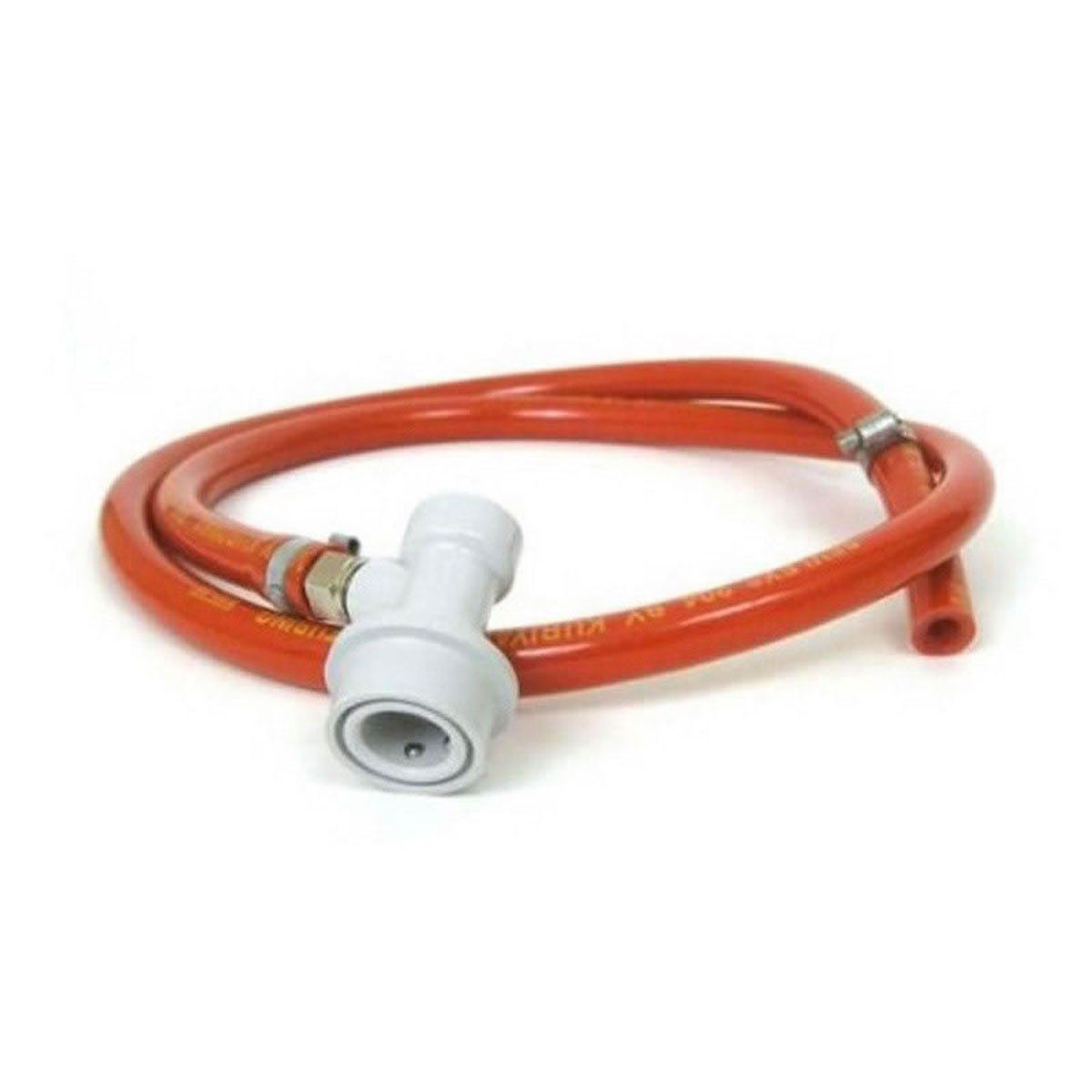
With one of these regulators spliced inline.
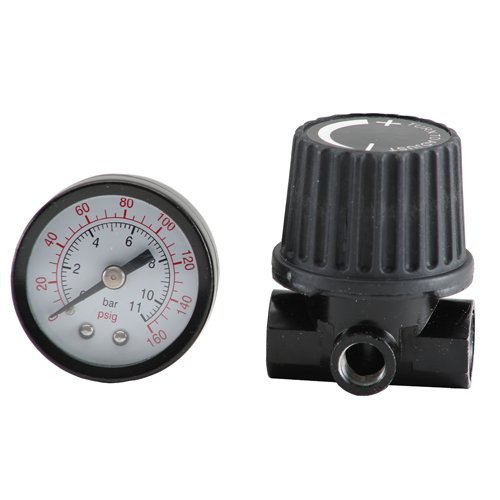
You'll need one 1/4 NPTxBarb adapters for each side of the regulator as well.

clamps for each connection...
This can be VERY cheap if you already have stuff on hand. I was given the regulator by a friend. I had the red gas line and clamps. I think I purchased the brass barbs and clamps...
NOTE: The regulator I listed is not the one I used in my build. I was given a low pressure regulator with more adjustment in the low end below 40 psi. Search around, you may find one. Also, I snagged the photo of the entire setup assembled together from JCav here who asked me about how to build one...
Anyway, here's what I do.
-Mix a 5 gallon batch of LLC in a keg.
-Attach the regulator adapter to any standard compressed air hose
-Adjust pressure down to about 5 psi
-Hook up liquid line of serving line to keg of LLC
-Connect regulated compressed air line to keg of LLC
-Open tap and allow LLC to flow for about 5 minutes. This is the recommended flow time for the brand of LLC I use.
-Repeat for each line or get yourself some Ball Lock Jumpers from BobbyM jumping each serving line together and clean all lines in a single pass.

-Rinse and fill keg with fresh tap water. Repeat all these steps to rinse all lines of any LLC. (Follow instructions for your LLC)
-Allow all rinse water to be pushed out of keg as well as lines to leave lines empty. Or, shut it down just before the keg is empty of rinse water to leave the lines full of water... your choice.
---Regulated compressed air Keg adapter---

Quick Connect

Barbed adapter

red beverage gas hose assembly

With one of these regulators spliced inline.

You'll need one 1/4 NPTxBarb adapters for each side of the regulator as well.

clamps for each connection...
This can be VERY cheap if you already have stuff on hand. I was given the regulator by a friend. I had the red gas line and clamps. I think I purchased the brass barbs and clamps...
Last edited by a moderator:




